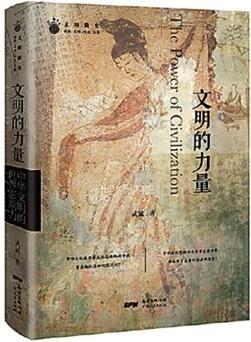Chinese civilization’s widespread influence
Author : SUN ZHENG Source : Chinese Social Sciences Today 2021-01-19

The Power of Civilization
In the era of globalization, a global view of history, which emphasizes the exchanges, collisions, interactions, and integrations among various civilizations, has gradually been accepted and altered our perception of history and culture.
Authored by Wu Bin, vice chairman of Chinese Society for Historians of China’s Foreign Relations, The Power of Civilization reveals the historical spread and influence of Chinese civilization in foreign territories, and its contribution to world civilizations.
The influence and contribution of Chinese civilization is not abstract, but based on facts, specific cultural elements, and events. First of all, some of these elements belong to material civilization—species native to China such as millet and rice, products such as silk, porcelain, and tea, as well as science and technology represented by the Four Great Inventions (papermaking, printing, gunpowder, and the compass) of ancient China. In addition, these cultural elements involve Chinese artistic forms such as painting, music, and dance, Confucian thoughts that embody the spirit of Chinese culture, as well as institutional civilization, such as ancient laws and regulations with Chinese characteristics, and the imperial examination system.
The Four Great Inventions have generated impacts which far exceed their own technical fields. They have performed a crucial role in the inheritance of culture, the expansion of global conquest, and the evolution of world history. Many Western thinkers spoke highly of these contributions, such as German philosophers Karl Marx (1818–1883) and Friedrich Engels (1820–1895), as well as English philosopher Francis Bacon (1561–1626), who once wrote that “Printing, gunpowder, and the mariner’s needle [compass]…these three have changed the whole face and state of things throughout the world.”
Silk, porcelain, and tea, which were called China’s “three major products” or “three major trades,” have been continuously exported to all parts of the world for thousands of years. As the main export products in early modern world trading systems, they dominated global international trade for centuries, changing and enriching the daily lives of people around the world. At the time, they became the most representative Chinese cultural symbols.
Actually, much more than the four great inventions and the three major products have had a major impact on world civilizations. Ancient China’s institutional civilization, artistic forms, academic thoughts, and even lifestyles contributed much. As China and Europe shared direct contact and exchanges after the age of exploration, chinoiserie was influential in European countries for two centuries. Chinese style became a popular fashion trend in the fields of art, architecture, gardening, and even daily life. China’s Confucianism also provided an important intellectual inspiration for the Enlightenment.
This article was edited and translated from Guangming Daily.
Ye Shengtao made Chinese fairy tales from a wilderness
Ye Shengtao (1894–1988) created the first collection of fairy tales in the history of Chinese children’s literature...
-
How northern ethnicities integrated into Chinese nation
2023-09-18
-
Mogao caves
2023-09-12
-
Mogao Grottoes as ‘a place of pilgrimage’
2023-09-12
-
Time-honored architectural traditions in China
2023-08-29
-
Disentangling the civilizational evolution of China
2023-08-28
-
AI ethics in science fiction
2023-08-23














 2011-2013 by www.cssn.cn. All Rights Reserved
2011-2013 by www.cssn.cn. All Rights Reserved